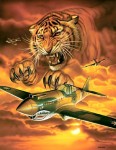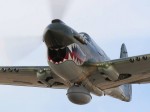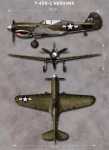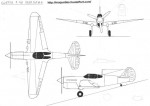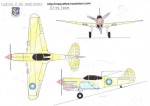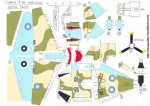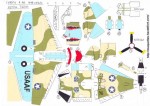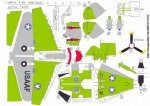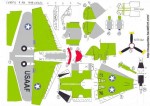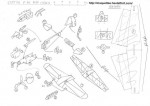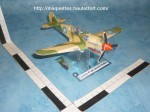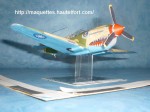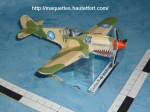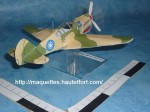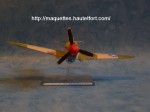Le Curtiss P-40 Warhawk fut le troisième avion de chasse des États-Unis par la production, il vola pour la première fois en 1938. Il traîne une réputation d'avoir été un avion de chasse dépassé et surclassé par ses adversaires, ce qui provoqua même une enquête après la Seconde Guerre mondiale, visant à déterminer pourquoi il avait été maintenu envers et malgré tout en production. Il semble plutôt avec le recul que ses pilotes eurent à combattre dans des conditions difficiles qui ne permirent pas à l'avion de briller comme certains modèles postérieurs.
Tous les appareils qu'il a cotoyé au début de la seconde guerre mondiale furent déçevants jusqu'à l'arrivée du P-51 Mustang en automne 1943.
Tout cela fit que le P-40 resta donc par la force des choses jusqu'à l'automne 1943 le seul chasseur valable et disponible en grand nombre de l'aviation américaine (qui ne l'engagea jamais sur le front d'Europe du Nord, alors qu'elle fit un essai catastrophique avec le P-39).
The Curtiss P-40 Warhawk was the third fighter from the United States by the production, he flew for the first time in 1938. He is reputed to have been a fighter and exceeded outclassed by his opponents, which caused an investigation even after the Second World War to determine why he was kept upside down and still in production. Rather, it seems in hindsight that its pilots had to fight in difficult conditions did not allow the airplane to shine as some later models. All the machines he has rubbed shoulders at the beginning of World War II were disappointing until the arrival of the P-51 Mustang in autumn 1943. All this showed that the P-40 remained so by force of circumstance until the autumn of 1943 the only fighter valid and available in many U.S. aircraft ( who ever hired him on the forehead of northern Europe, whereas it took a catastrophic test with P-39).
Pour plus d'infos sur cet appareil voir le lien / For more information about this device see the link:
http://www.avionslegendaires.net/curtiss-p-40-warhawk.php
Pour télécharger le plan 3 vues, des pièces noir et blanc et en couleur et le schéma de montage du P-40 Warhawk au 1/66 en pdf / To download the 3 sights plan, black and white pieces and in color and the installation diagram of P-40 Warhawk in 1/66 pdf, CLIQUER ICI
Photos d'une maquette construite en octobre 2010/ Photos of a model built in October 2010
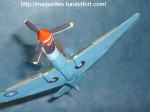 |
CONSIGNES DE CONSTRUCTION :
- Il n'y a pas de train d'atterrissage sur cet maquette.
- Un fil de fer en travers de la voilure est nécessaire pour donner la forme des ailes.
- Un disque en plastique est mis derrière l'hélice pour une illusion d'hélice tournante.
- L'hélice doit être doublé de carton, en plus du disque en plastique optionnel.
- Les câbles d'antennes radios sont faites en fil noir et les antennes en fil de fer.
BUILDINGS INSTRUCTIONS :
- There is no landing gear on this model.
- A wire across the wing is necessary to give the shape of wings.
- A plastic disk is placed behind the propeller for an illusion of rotating propeller.
- The propeller must be lined with cardboard, in addition to the optional hard plastic.
- Radio antenna cables are made of black wire and antennae wire
